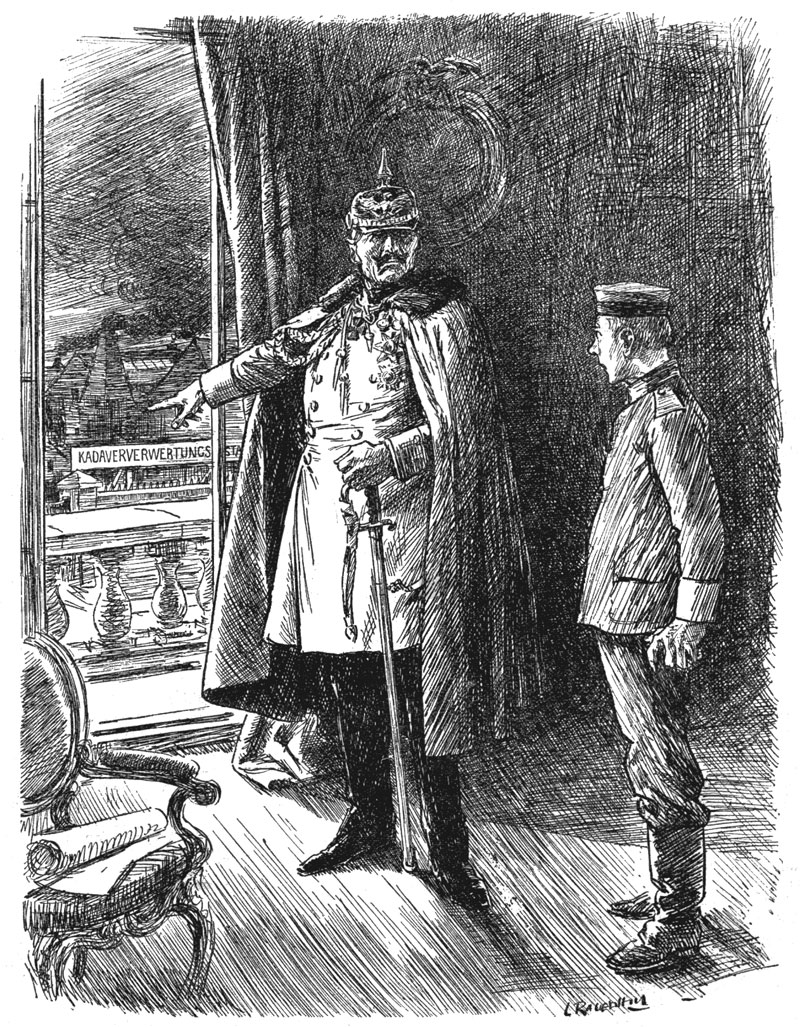War propaganda is a pretty dirty business at the best of times, but the rumours of the German Corpse Factories (Kadaververwertungsanstalt) are something else.

During World War I, stories were circulated that the Germans had introduced a new way of ‘recycling’ the dead bodies that were piling up on the front. The Times ran this story in 1917:
“We have known for long that the Germans stripped their dead behind the firing line, fastened them into bundles of three or four bodies with iron wire, and then dispatched these grisly bundles to the rear…”
The report went on to describe trains full of dead bodies that were transported from the Western Front to specialist factories:
“Transported on this endless chain into a long, narrow compartment, where they pass through a bath which disinfects them. They then go through a drying chamber, and finally are automatically carried into a digester or great cauldron, in which they are dropped by an apparatus, which detaches them from the chain. In the digester they remain for six to eight hours, and are treated by steam, which breaks them up while they are slowly stirred by machinery.”

This gruesome tale was widely believed when it was first circulated in 1917, but is it true?
The answer is no. The story started when British Brigadier General John Charteris came across two images of the Germans at war. One was a photo of dead horses being taken back from the front and the other was a train taking dead Germans for burial. Secretly, Charteris swapped the captions, inventing the story of the corpse factories.
The photograph was published in a Chinese newspaper and the story went global and appeared in both The Times and The Daily Mail. The story was initially received with shock around the world but as soon as it became apparent that this was a hoax, the knives were out for Charteris. After scathing criticism, Sir Douglas Haig’s chief of intelligence admitted to his lie in a private function in New York City. The news filtered back to London and he was forced to make an apology although he denied inventing the story himself.

Recent study has claimed that Charteris may not have invented the story after all, and it could well have stemmed from rumours from the troops rather than a concentrated British propaganda effort. The most extreme notion comes from the writings of Shimon Rubinstein, who claims that the factories were indeed real and “possible pilot-plants for the extermination centres the Nazis built during World War II.”
Either way, the story did much to incite hatred in Britain and undoubtedly contributed to many men signing up to the army to vent their fury.
Whatever the source, it remains a dark moment.
